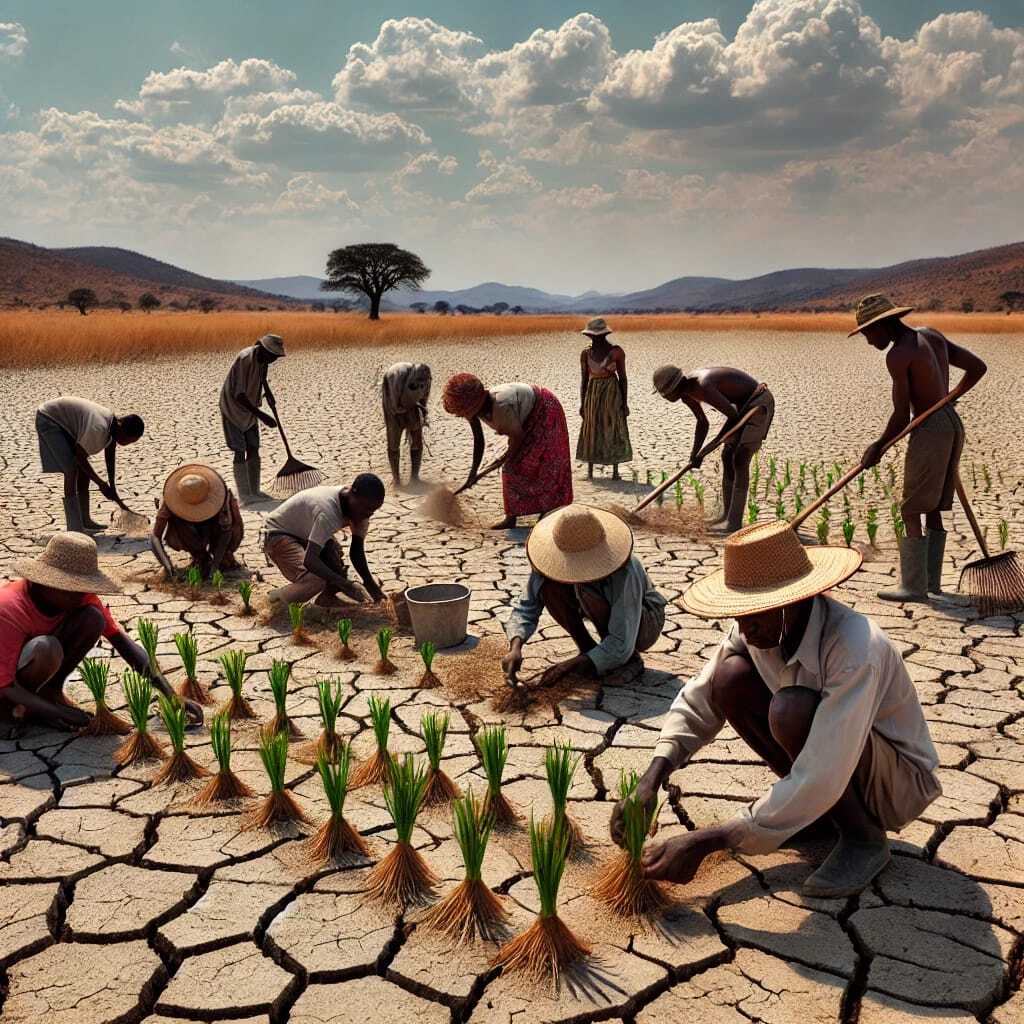In Drought-Stricken Zimbabwe, Small-Scale Farmers Return to Traditional Crops to Combat Food Insecurity
Faced with the worst drought in over 40 years, Zimbabwe’s small-scale farmers are turning to traditional, drought-resistant crops such as pearl millet, finger millet, and sorghum. As the Zimbabwean government shifts policy to promote these resilient grains, experts see a growing market and increased consumer interest—although changing preferences still pose a challenge.
Drought Crisis and Food Insecurity
Zimbabwe is currently grappling with a severe El Niño-induced drought, which has decimated last year’s rain-fed maize crops, leaving over 7 million people in urgent need of food assistance. With 70% of Zimbabwe’s population dependent on rural economic activities—mainly rain-fed farming—the recurring droughts have exacerbated food insecurity. The government is now seeking up to US$2 billion to mitigate the crisis.
Experts link the severity of these droughts to climate change and the country’s over-reliance on maize, a crop introduced by the British colonial government, which promoted its adoption by indigenous farmers. Unfortunately, maize is highly vulnerable to changing climatic conditions, unlike traditional cereals that are naturally drought- and pest-resistant.
Farmers Returning to Resilient Traditional Crops
Leonard Madanhire, a small-scale farmer from Mutare district, highlights the shift among farmers.
“Last season, we lost our entire maize crop. But the few who planted pearl millet, finger millet, or sorghum had better yields. These traditional crops are both drought- and pest-resistant. It’s time we return to our traditional crops,” Madanhire told Food Tank.
Government policies in recent years have increasingly supported the production of traditional grains. According to climate change and food systems expert Anna Brazier, more than 322,606 hectares of land had been dedicated to growing traditional grains by January 2025. “The government has implemented favorable price control measures through the Zimbabwe Grain Marketing Board, incentivizing farmers to grow these crops. This shift has helped improve market stability,” Brazier explains.
Policy Support and Growing Markets
The Zimbabwean government’s recent focus on climate resilience and food security has led to the adoption of policies promoting traditional cereals. NGOs have long advocated for the reintroduction of traditional grains, but weak markets and low prices previously discouraged smallholder farmers from embracing them.
Brazier points out that collaboration with the private sector has helped address these challenges. “NGOs have been working with private companies to develop food products containing small grains, which has boosted demand. Advances in technology have also benefited farmers, processors, and food manufacturers,” she says. However, Brazier highlights that consumer behavior remains a challenge. “Zimbabwean consumers have historically preferred maize and increasingly demand wheat-based products like bread and pasta. Millets and sorghum are still perceived as ‘poor man’s food,’ a perception rooted in colonial-era policies that devalued traditional crops.”
Overcoming Colonial Legacy and Consumer Perception
The colonial-era Maize Control Act of the 1930s placed economic value on white settler-produced maize, relegating traditional cereals to a position of economic disadvantage. This perception persists today, says Bryan Kauma, an expert on Southern Africa’s food and environmental history.
Nonetheless, there is a growing awareness of the health benefits of traditional grains. According to a study published in Frontiers in Nutrition, millets are considered “smart foods” due to their high nutritional value and climate resilience.
“The promotion of traditional grains by NGOs, the Ministry of Health, and the Food and Nutrition Council, along with advocacy from Zimbabwe’s First Lady, Auxillia Mnangagwa, has led to increased adoption by health-conscious urban consumers,” Brazier adds.
A Slow But Promising Shift
Food and seed festivals held across Zimbabwe have also contributed to raising awareness and demand for traditional grains. However, Brazier emphasizes that more work is needed to fully reintegrate traditional cereals into mainstream consumption.
“It may take time to completely wean farmers off maize,” says Madanhire, “but millets and sorghum are our only hope for a food-secure future.”
With ongoing government support, market expansion, and consumer awareness, Zimbabwe’s small-scale farmers are poised to restore traditional crops that not only offer climate resilience but also hold the potential to secure the nation’s food future
